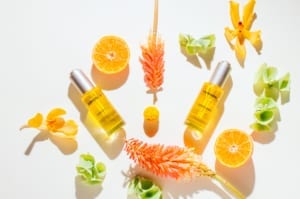For those of you who are not familiar with LivOn Labs, you’re in for such a treat. LivOn Labs is changing the game in the Vitamin world and we have been fans for a long time (all the Goldfaden MD team members use these!). We had the absolute pleasure of sitting down with Kaili Carpenter, Executive Director, to learn more about her and her daily rituals.
Kaili Carpenter, the Executive Director of LivOn Labs, was born and raised in Atlanta, GA. After finishing her undergrad at UGA, she worked in events management at two firms then established her own events business with a focus on continuing education in the medical field.
Kaili always helped with the family business, LivOn Labs, which was founded by her Uncle Les and Aunt Cindy Nachman in Las Vegas. She worked the LivOn booth at trade shows across the country for a few years explaining the science of LivOn products to attendees while continuously sampling product with the uninitiated.
An interest in exercise, health and wellness has been something Kaili has embraced since middle school. From horse back riding to competitive high school cheerleading, Kaili then evolved her interests into yoga, dance and Pilates. Currently Kaili keeps a regimen of exercise along with keeping her food intake healthy. She also has a specific interest in skin care, and skin health after years ago learning the key attributes of LivOn Vitamin C, B and Glutathione (I.e. some of our favorite Vitamins from their collection).

What does good food mean to you?
Good food is whatever makes you feel good. For me, that’s feeding my body what it needs to run efficiently. You can’t put diesel fuel in an engine that requires gasoline and expect that engine to function. I feel my best when I’m eating real, whole foods: veggies, proteins, healthy fats, and lots of water.
That being said, there is a place for a yellow cupcake with white buttercream icing on my “feel good food” scale. It’s many of my favorite childhood memories on a plate. It doesn’t fall in with veggies, proteins, or healthy fats, but when I occasionally indulge, I get that sugar-spike, giddy, nostalgic rush (almost always followed by a sugar crash — didn’t say I’d feel “good” for long). No guilt, though. That cupcake is a craving no avocado is going to sate.
How do you start your mornings?
First thing: I make my bed. It’s a quick, silent task that gets my brain and body slowly acclimated to the day. I am an ardent bed maker. Even in hotels.
What’s your go-to am beverage?
I have an AM beverage line up: Lots of water with a little bit of lemon, a shot of grapefruit juice with my Lypo-Spheric®supplements (VitaminC, Glutathione, and Acetyl L-Carnitine) then, a Fab Four Smoothie with Moon Juice Adaptogenic Protein. I met with holistic nutritionist, Kelly LeVeque (creator of the Fab 4 smoothies) at a goop function, and her smoothie approach reinvigorated my mornings. Also, you can’t beat Moon Juice protein powder.
What are your must use daily beauty products?
I swear by the Goldfaden eyecream, De Mamiel’s Exhale Daily Hydrating Nectar, Dr. Nigma’s Crème No. 1 and Dr. Barbara Sturm’s Hyaluronic Serum and lip balm. Between the dry air and intense sun in Vegas, these products have made a world of difference. There’s a theme here: Moisture.
How do you de-stress?
I take a cardio dance class three days a week. The instructor/studio owner is a professional choreographer and former Broadway performer. She’s always coming up with new dances to current songs. I have to leave any stress thoughts at the door of the studio; I need to be completely present if I’m going to get through her choreography!
Favorite mood-boosting meal?
Avocado with a runny egg, hot sauce, and a side of sliced cucumber.
What’s a dinner recipe you currently have on repeat?
It’s summer, and it’s crazy hot here in Vegas. My recipes this time of year involve minimal heat in the kitchen. Lately, I’m making a quinoa /salad bowl combo. I make a large batch of quinoa to keep in the fridge to use throughout the week, chop up various veggies that look good at the moment, then combine. You can also add in some chicken, tuna, an egg, or whatever you have on hand. It’s the perfect no-cook dinner. I found the recipe in Gwyneth Paltrow’s The Clean Platecookbook and was like, “Why didn’t I think of this meal earlier?” Her miso ginger dressing is super simple and really makes the dish feel special.
What is your daily mantra?
Pay attention to intention.


